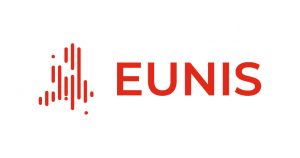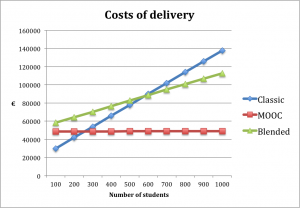 In the tropical seas, in the so-called doldrums, sailors are aware that, when the clouds rise in the distance, they must rush to modify their sails before the storm. In recent months announcements have been made by Coursera, EdX as well as by some important American universities and MOOC business models are starting to emerge. What does this mean for our universities? Is the storm coming? I will let you build your own judgment.
In the tropical seas, in the so-called doldrums, sailors are aware that, when the clouds rise in the distance, they must rush to modify their sails before the storm. In recent months announcements have been made by Coursera, EdX as well as by some important American universities and MOOC business models are starting to emerge. What does this mean for our universities? Is the storm coming? I will let you build your own judgment.
The MIT policy is changing: they transform their teaching organization. The year will no more be divided into semesters but in shorter modules of six weeks about and degrees will be organized as series of carefully chosen modules. This will ease the transformation from a classical face-to-face teaching into blended learning using SPOCs, whenever required.
Can we follow the same path? Transforming our calendar is easy but can we afford building a number of MOOCs or SPOCs? With budgets constrained, whether in finance as well as in personnel, where should we first focus our efforts?
Since I was asked for an EdTech conference, beginning of June, to deliver a speech about business models for MOOCs, I leaned back on the cost of this form of teaching.
The cost, to build a six weeks MOOC, can be estimated between € 30,000 for the simplest ones, when it is easy to transform a classical course into a suitable form, and may rise beyond € 100 000 for the more complex ones (see my paper in this issue of EUNIS Journal of Higher Education IT.) To obtain these figures I was considering the same course being reused, with some modifications, three times or three years. These figures take into account the consolidated wages, but not surrounded, to be able to compare these costs to the classical delivery of the same course. The developments are made in-house, assuming that the university possesses the competent staff, teachers and technical support. Outsourcing the building of a MOOC would be more expensive. These values are in agreement with other studies.
Let us now compare the costs when delivering the same course in a hybrid mode, i.e. a SPOC, with a limited number of face-to-face classes in small groups, like it is used at EPFL, or in the classical approach, i.e. in a lecture hall. The SPOC needs fewer teachers because plenary lectures in the amphitheater are suppressed and the number of application lectures in small groups is reduced. When delivering the course as a MOOC, we must only add the wages of the tutors whose number increases slowly with the number of students. It is drowned in the total cost to build the MOOC, especially considering the variability of my estimation between 30 000 € and 100 000 €!
In my calculation, I consider one teacher for 50 students and a meeting every two weeks for the hybrid mode (SPOC). For the classical delivery one hour in the theater per week and one meeting every week in small groups (50 students). Since I did not have a precise estimation for the cost of the buildings, my estimation is based on the lower bound of rental prices. This therefore includes the depreciation of the assets. The cost increases rapidly with the number of students because the salaries of the teachers represent an important part of the expenses.
The difference between blended learning and SPOC is mainly the use of the buildings for the small classes. Given the variability of my estimations, I did not draw another curve. Distance education and SPOCs are about the same and are represented on the same curve.
For the classical delivery, my estimates are based on the official working time of Higher Education teachers in France: 6 hours of work for one hour in front of the students in the lecture hall, 4 hours of work for one hour in front of the students for applications lectures in front of small groups. Playing with all these variables and different estimations for the cost of the MOOC, gives always curves as shown below.
Below 200 up to 300 students the cheapest means to deliver a course is the classical approach. Blended learning becomes cheaper only for large classes above 500 students. A conventional MOOC, i.e. delivering a course without face-to-face interaction and no personal interaction is never of interest below 300 students. These values vary with the real cost to build the MOOC and the other variables such as salaries, buildings… which may change from one university to another, but the message is very clear: savings can be made, using MOOCs or SPOCs, only for very large groups of students. For a single university it may only work for the first years.
This leads to two conclusions: increasing the number of students or grouping universities, to share the costs, are the only solutions to save money. These are just the solutions, emerging in some US universities.
Arizona State University is the consortium of all public universities in this state. They will open a common first year, as distance education, with the help of edX that gives them free support. The full first year degree will be delivered for less than $ 6,000, which is cheaper than the conventional prices in the US today. This is being made possible thanks to the scale factor: more students and development costs supported by the consortium. The promoters of this experience have added an interesting feature: the MOOCs are free and students will pay at the end, before the examination. In other words they will not engage if they do not think they have a good chance of succeeding. With a lmited number of teachers that interact remotely with students, without the cost of the campus, their cost curve is closer to that of a MOOC as any other.
Another example is Urbana Champaign university, which will open an MBA for $ 20,000 only. This may sound crazy but be aware that the registration fees, for such diploma, can exceed $ 60,000 per year! Urbana works with Coursera, in a pattern roughly equivalent to the previous one: studies will be free and students will have to pay only to obtain verified certificates and predefined sets of specializations. When, already advanced, they may apply for recognition of their achievements for this eMBA and will pay the extras to get the Urbana degree. The business model is that Urbana hopes to attract an additional number of students without engaging additional staff or having to build new premises on its campus.
And behind these two universities, we find again Coursera and edX, which are the only ones able to offer a wide catalog. Here is the limit of the simulation shown previously: I have not taken into account the cost of support that these agencies provide.
Daphne Koller, in an interview at Wharton school, said that, within two years, Coursera will be able to offer the full curriculum of a university. Coursera believes it may present its catalog to universities that want to build their own curriculum. This will not affect the best known universities but smaller ones, such as as community colleges, which will become mere intermediaries who gather an array of MOOCs, add a support and will issue their degrees. These universities will only be assemblers of courses, build otherwise, and will become controlers of acquired knowledge and delivery of grades.
The Coursera’s business model has not changed: they believe they will recover their costs through the sale of certificates and of courses produced by others. EdX is more discreet about its model, sheltered behind its wealthy donors.
What will it be in Europe, except in England, where the cost of education is essentially paid by the state? It is still difficult to know. Digital education will play its part, and many companies are already coming in the business of the production and broadcast of Higher Education. Private schools will be first, because they have greater control of their costs. Public universities are not immune: their strength is the delivery of grades and diplomas, but it could be questioned either by changing the institutional rules or simply because employers consider new forms of graduation as valid. English speaking universities are more in danger than the other because students continue to prefer to study in their native language. But for how long?
In the immediate future, adult education agencies will be first affected because they do not have the protection of the graduation. But that is a topic for another column.
In any case, all Higher Education institutions, public or private, would do well thinking quickly on their evolution, in the light of these emerging forms of economic models.
The MOOC insidiously continue to transform the landscape. We are still at the beginning.
PS: there will not be a new issue before a while: let us chat together at EUNIS 2015, in Dundee!


